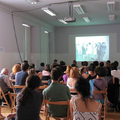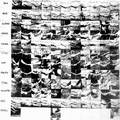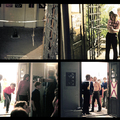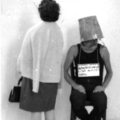"In the framework of the collaboration with the "Invisible History of Exhibitions", we are organising an archive-exhibition at Labor in May 2009, which endeavours to place the events of the Hungarian art scene of the 1960s and 70s into an international context. Alongside Hungarian archival documents, works, and publications we also present two similar projects from Belgrade and Serbia.
Within the Hungarian art scene of the 1960s and 70s, the majority of progressive events took place in the grey zone of non-official exhibition spaces, which is why their international visibility and availability for research has remained fragmentary and difficult to convey. Numerous chronologies of the era, built upon each other, have been produced: from the Magyar Műhely’s (Hungarian Atelier) annual art almanac, through the list of events compiled by Dóra Maurer and László Beke in 1980, and up to the chronologies of Artpool Research Centre and C3 Foundation. In addition to chronologies, many have treated the era in map and collection/museum formats, such as NETRAF with his Portable Intelligence Increase Museum, Little Warsaw’s Only Artist project, or internationally Irwin’s East Art Map.
Instead of aiming at an objective history gained from the synthesis or reconciliation of differing individual points of views we rather would like to trace the idiosyncratic pattern of difference and accordance, the map of blind-spots and legends. It is to this end that we ask your help. Name ten events or exhibitions of key importance for you from the Hungarian art scene of the 1960s and 70s! You may also explain your responses.
Thank you for your contribution,
Dóra Hegyi and Zsuzsa László"
We sent this email to about 60 artists, curators, art- and cultural historians, of which we received replies from approx. 40 people. Here you can read a selection of reflections sent to our call. In the Hungarian version you can see the complete answers.
translation (call and all the answers): Adele Eisenstein

 tranzit is a contemporary art program supported by the Erste Bank Group
tranzit is a contemporary art program supported by the Erste Bank Group

 The exhibition Parallel Chronologies and the symposium The Invisible
History of Exhibitions is part of the international project Art Always Has
Its Consequences co-financed by the Culture 2007 program of the European
Union (partners: WHW Zagreb, tranzit. hu, Muzeum Sztuki Łódź, kuda.org
Novi Sad).
The exhibition Parallel Chronologies and the symposium The Invisible
History of Exhibitions is part of the international project Art Always Has
Its Consequences co-financed by the Culture 2007 program of the European
Union (partners: WHW Zagreb, tranzit. hu, Muzeum Sztuki Łódź, kuda.org
Novi Sad).








Utolsó kommentek